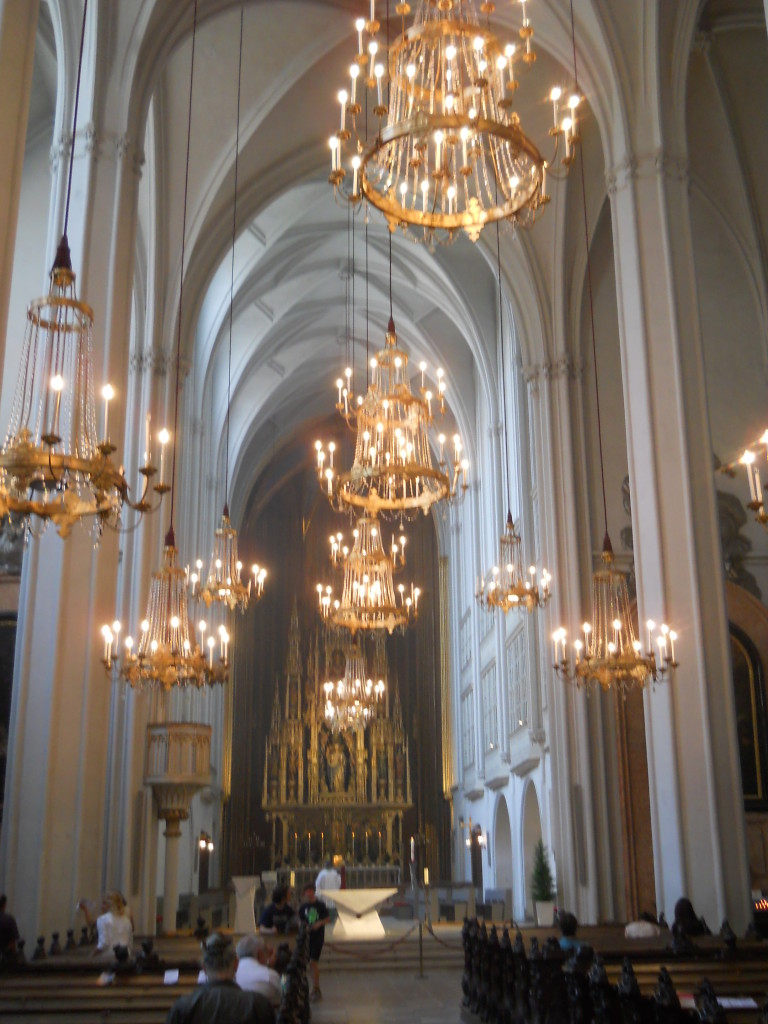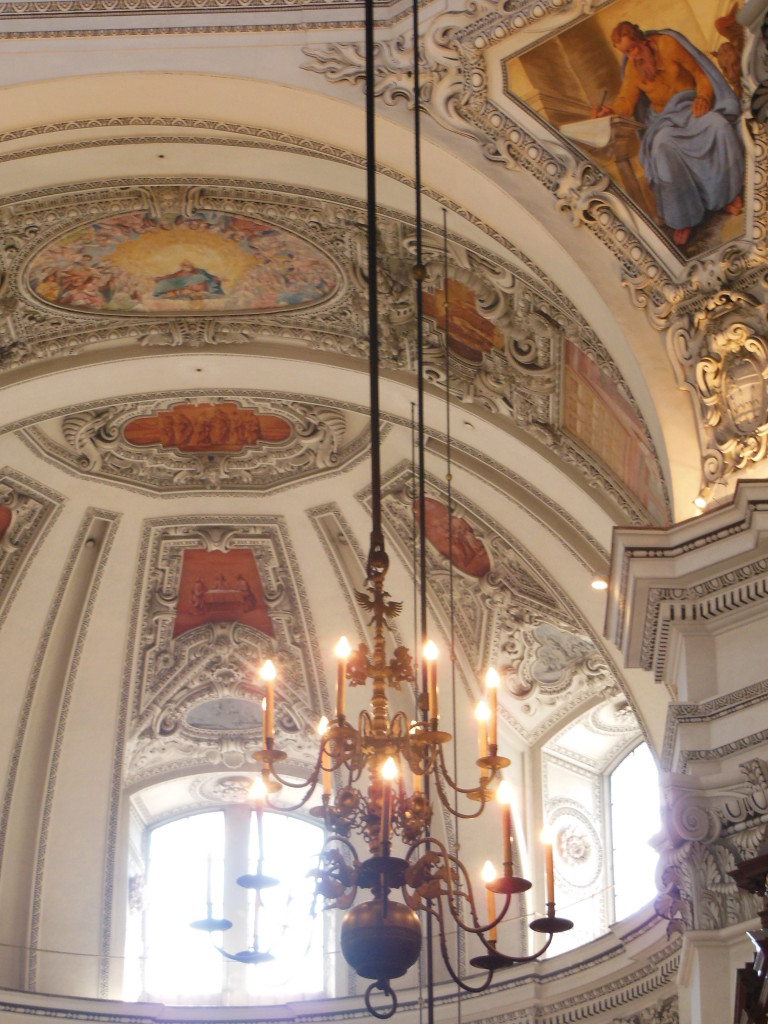
normakennedy / Pixabay
I want to move from the scriptural support for the practice of infant baptism to some that is worldview related. Mixed with these are some personal, perhaps even sentimental, considerations as to why I remain a paedobaptist.
Believer baptism (credobaptism) puts together the offer of God’s promises and their acceptance. Infant baptism (paedobaptism) separates the offer from the acceptance.
In my mind, separation has a couple of advantages.
God’s Action, Not Mine
For one thing, applying the sign of baptism on an infant emphasizes God’s promises, rather than the individuals reception of these promises. In infant baptism, God promises–He is the agent–and the little helpless human simply receives.
Every time we witness this ceremony we see again this picture of Grace. The individual is incapable of responding to God. They can’t reject him, can’t say thank you. There is no way that we deserve or in any way can earn the blessings of God and unity with Christ as symbolized in baptism. The very helplessness of the recipient reinforces this idea.
This is a strange idea in our modern culture where the individual is supreme, but not so in the ancient world. It is likely that the first century writers of the New Testament couldn’t conceive of believer baptism for they were community and family oriented, rather than individual oriented. When they report that “households” (Acts 16:15 and again in verse 31) were baptized, they would likely be shocked that anyone could think that this didn’t involve children. It wasn’t until the sixteenth century–the century in which the individual was born–that Christians began to question the legitimacy of infant baptism.
Emphasis on Family
While, primarily emphasizing the actions of God, infant baptism also emphasizes community–the nuclear family, biological or adoptive families, and the church family.
At an infant baptism, following the promises of God, the parents promise and the church body also make some heavy promises. The Bible is very clear that just because you are in the family, doesn’t mean that you will necessarily grow into the transformation for which circumcision is the sign, but God still has established family as the means by which God’s Word is to be taught and lived.
This same principle is embodied in infant baptism. From my position as the father, infant baptism was a daunting event. In it there is an awareness that this baptism is no guarantee that the child will receive the ultimate spiritual blessings for which it is a signifier. And that if the helpless child in your arms is to know about God’s promises, it is pretty much up to me to communicate them. Standing there the parents become poignantly aware of the awesome responsibility that is theirs to train and teach the child in their arms so that she becomes the individual who will profess her acceptance of God’s promises.
Emphasis on Community
When the parents have made their promises, the church body makes theirs–they accept the obligation to support the parents as they raise the child. The ceremony of infant baptism emphasizes the actions of God and his agents.
We are talking about two very important events in the life of a Christian–every Christian acknowledges the importance of doing something about the children of believers; every Church also recognizes the importance of the new Christian publicly professing their faith in Christ. The questions is where do we put baptism? And what do we use to commemorate the other significant event?
When those who have been baptized as infants come to faith in Jesus Christ, they publicly profess their faith. This is commemorated in many different ways, but this is how it went with my children. They attended a year long class where they were instructed in the foundational beliefs of the church and discipled in being a member of the Body of Christ. Then they were examined by the church leadership. During a church service, an individual who had been a significant mentor on their spiritual journey, introduced my child. She then offered their testimony, after which hands were laid on her by friends and family and she was blessed with prayer. The church service was followed by a time of fellowship with the church family and later, at home, with the extended family. This was a significant event, and it was treated at such.
Many (all?) churches that practice adult baptism alone, practice child dedication. Child dedication emphasizes primarily the actions of the parents who bring the child forward for dedication.
I have contended that infant baptism emphasize the actions of God at the baptism and believer baptism emphasizes the actions of the believer. Those who espouse infant baptism would argue that the practice that acknowledges God as the primary agent is the preferred, and more Biblical, approach.
Who is speaking in baptism? God or the baptized? Or both? For the infant baptizers, it is clearly God–he speaks first and human beings receive (as opposed to, human beings are active and God responds to our obedience). In my tradition, the believer will have their chance to speak, but that won’t be until he or she becomes a beleiver.
In a culture where the individual is god, to baptize infants is counter-cultural. We swim in the waters of individualism, and a ritual that focuses us on God’s action rather than our own, that focuses on the offer of Grace, rather than on our acceptance of it, is a ritual we ought to observe–if it’s scriptural. I think that there is strong evidence infant baptism is scriptural.
This is an important issue, but it is not a foundational issue, so I can easily continue to worship in my wonderful credobaptist church.




 This Destroyer, then, who visits death upon all the first born of Egypt is the bringer of End-of Time Judgement, long before the end of time. Time is bent when the Destroyer of the future kills all the first born in ancient Egypt who were unprotected by the blood of the second lamb.
This Destroyer, then, who visits death upon all the first born of Egypt is the bringer of End-of Time Judgement, long before the end of time. Time is bent when the Destroyer of the future kills all the first born in ancient Egypt who were unprotected by the blood of the second lamb.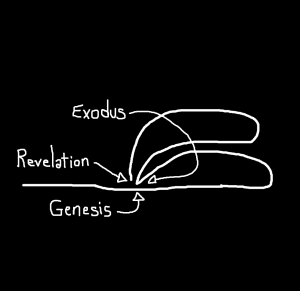 Back to the second lamb. In the Exodus story, the Hebrews understood that God was, again, making a claims the on the debt of the first born, and that he, again, provided an alternate. When they heard God’s instructions for the first Passover, they would likely make the connection to the first lamb–the ram caught in the thicket which took the place of Isaac on the alter. The story of the second lamb doesn’t mean what it means without the story of the first lamb. Again, time is bent back upon itself.
Back to the second lamb. In the Exodus story, the Hebrews understood that God was, again, making a claims the on the debt of the first born, and that he, again, provided an alternate. When they heard God’s instructions for the first Passover, they would likely make the connection to the first lamb–the ram caught in the thicket which took the place of Isaac on the alter. The story of the second lamb doesn’t mean what it means without the story of the first lamb. Again, time is bent back upon itself.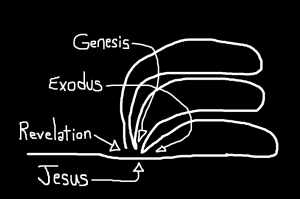 The night Jesus was arrested, he ate the Passover meal with his disciples. This night, the lamb wasn’t on the table, but at the table. The first two lambs were just animals. The ram that took Isaac’s place on the alter did not actually save the boy. Nor did the Passover lambs save the Hebrews by their death. The first two lambs only pointed to the third. The third lamb was the God’s Son, but this time no one yelled, “Stop.” Like the first two lambs, his death was in the stead of those who deserved it. Unlike the first two lambs, Jesus is the ultimate lamb that provides the ultimate salvation.
The night Jesus was arrested, he ate the Passover meal with his disciples. This night, the lamb wasn’t on the table, but at the table. The first two lambs were just animals. The ram that took Isaac’s place on the alter did not actually save the boy. Nor did the Passover lambs save the Hebrews by their death. The first two lambs only pointed to the third. The third lamb was the God’s Son, but this time no one yelled, “Stop.” Like the first two lambs, his death was in the stead of those who deserved it. Unlike the first two lambs, Jesus is the ultimate lamb that provides the ultimate salvation.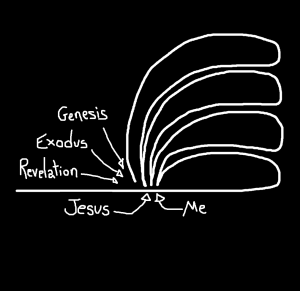 When we partake of the bread and wine, we are not simply remembering an event that took place 2000 years ago. We are standing at the convergence of several events, profound events each involving a substitutionary death.
When we partake of the bread and wine, we are not simply remembering an event that took place 2000 years ago. We are standing at the convergence of several events, profound events each involving a substitutionary death.


